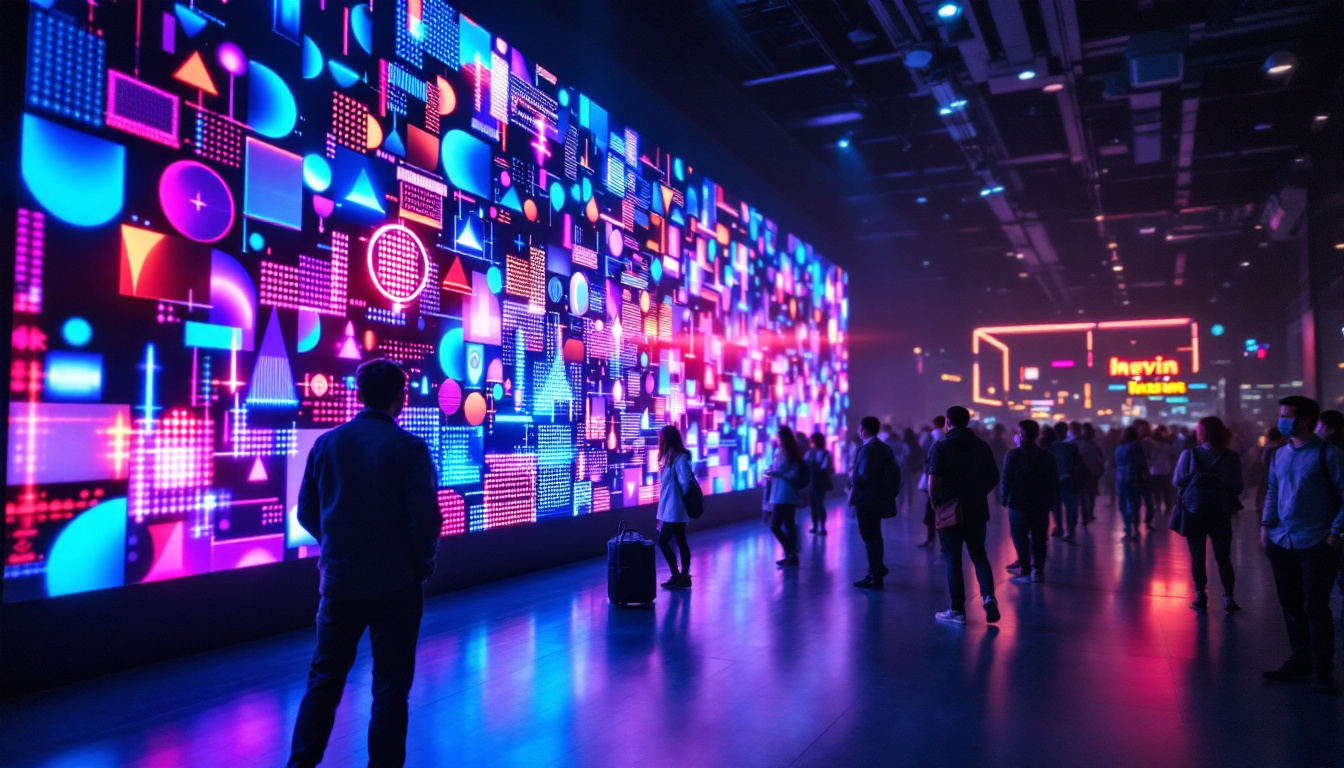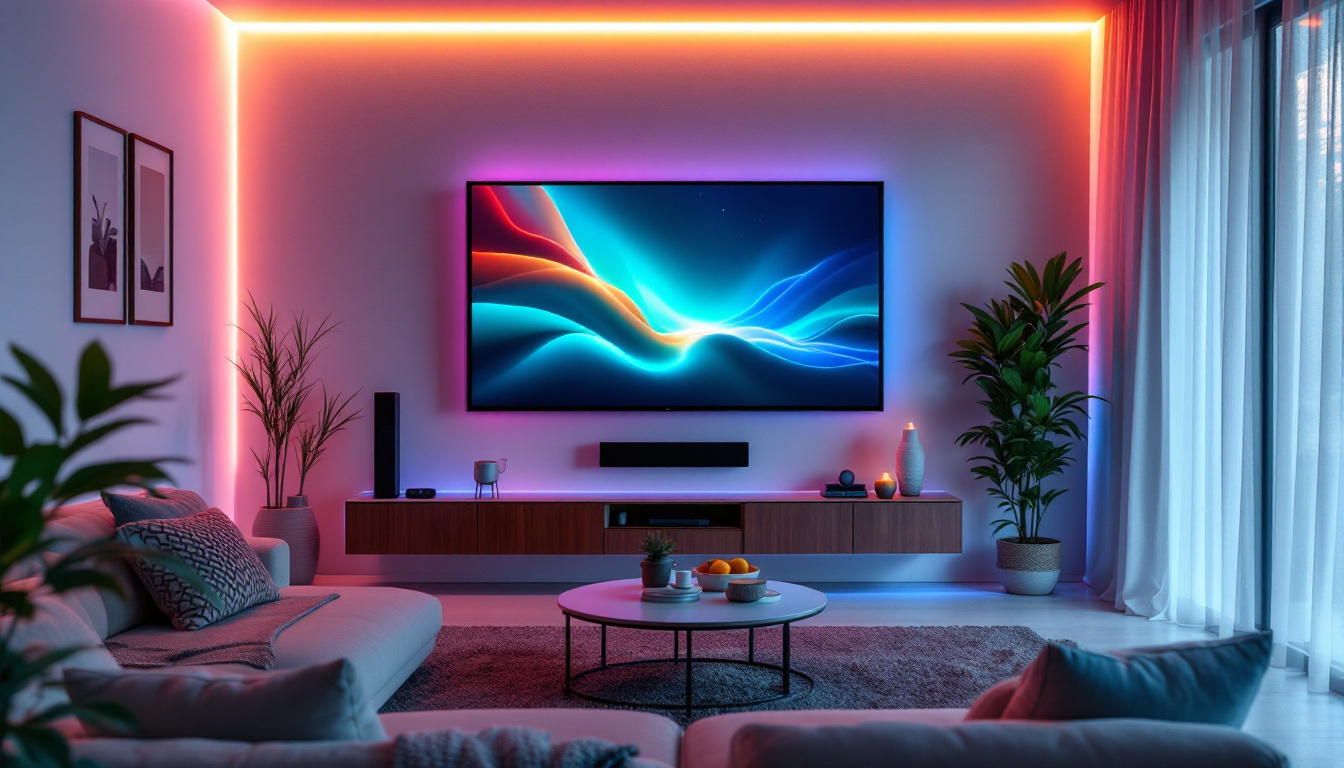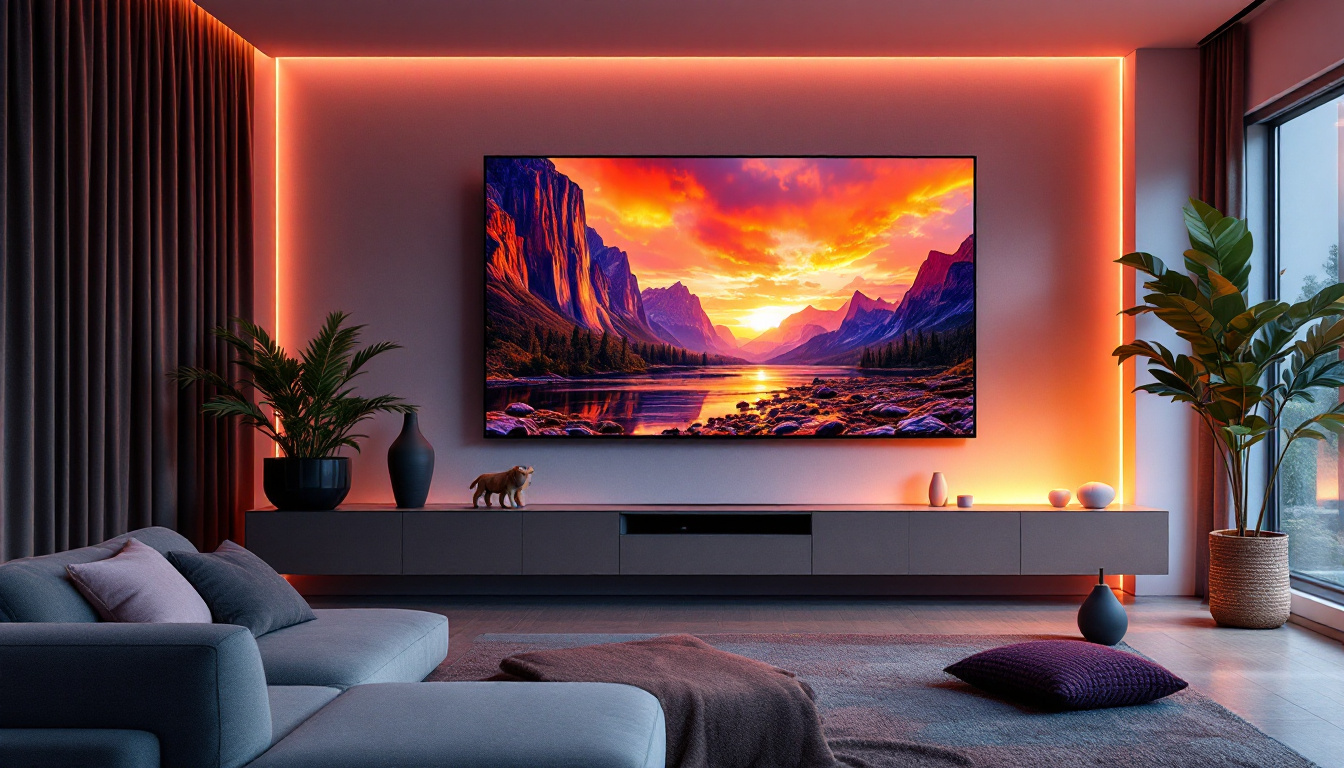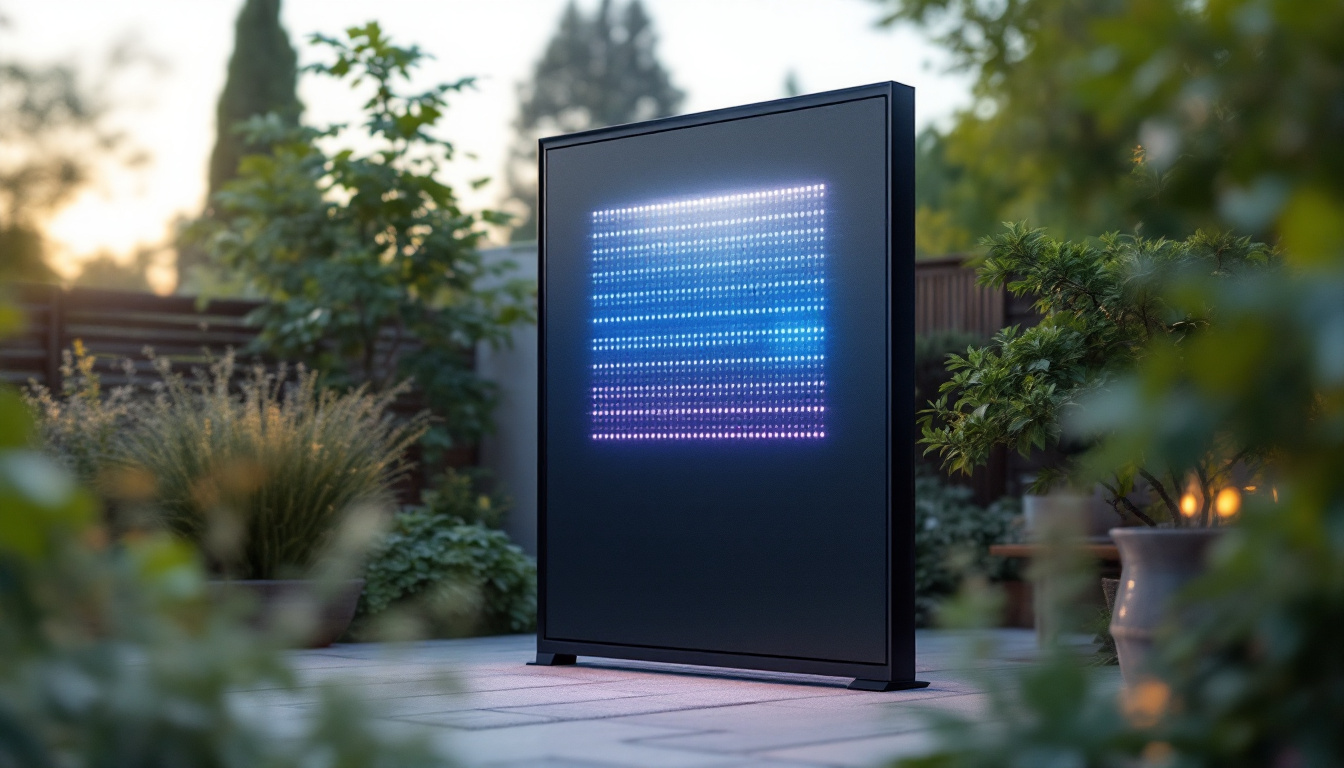The advent of digital technology has transformed the way information is displayed and interacted with. Among the most innovative solutions in this realm is the digital interactive wall, prominently featuring LED displays. These dynamic installations are not just visually striking; they also offer a multifaceted platform for engagement, communication, and creativity. This article delves into the intricacies of digital interactive walls, exploring their components, applications, and the technology that powers them.
Understanding LED Technology
LED, or Light Emitting Diode, technology has revolutionized the display industry. Unlike traditional display methods, LEDs offer superior brightness, energy efficiency, and longevity. This section will break down the core principles behind LED technology and its relevance to interactive walls.
What is an LED?
An LED is a semiconductor device that emits light when an electric current passes through it. The light produced can vary in color depending on the materials used in the semiconductor. This fundamental property allows for the creation of vibrant displays that can be used in a variety of settings, from billboards to interactive walls.
The compact size of LEDs enables them to be arranged in various configurations, creating high-resolution displays that can be viewed from considerable distances. This adaptability is a key factor in their widespread adoption across industries.
Advantages of LED Displays
LED displays come with numerous advantages that make them ideal for interactive walls. One of the most significant benefits is their brightness. LED screens can produce vivid colors and sharp images, even in well-lit environments. This characteristic is crucial for attracting attention in public spaces.
Another advantage is energy efficiency. Compared to traditional display technologies, LEDs consume less power, making them more sustainable and cost-effective over time. Additionally, their long lifespan reduces the need for frequent replacements, further enhancing their appeal.
Components of a Digital Interactive Wall
A digital interactive wall is more than just a collection of LED displays. It comprises various components that work together to create an engaging user experience. Understanding these components is essential for appreciating the full potential of interactive walls.
Display Panels
The display panels are the most visible components of a digital interactive wall. These panels are typically made up of multiple LED modules that can be arranged in various configurations to form a larger screen. The resolution of these panels can vary, affecting the clarity and detail of the images displayed.
High-resolution panels are particularly important for applications where fine details are crucial, such as in art installations or detailed presentations. The seamless integration of these panels ensures that the content displayed appears as a cohesive whole, enhancing the overall aesthetic.
Touch Technology
To make a wall interactive, touch technology is integrated into the display system. This technology can range from simple touch sensors to advanced multi-touch capabilities, allowing multiple users to interact with the display simultaneously. The choice of touch technology can significantly impact the user experience.
For instance, capacitive touch technology is often preferred for its responsiveness and accuracy, making it suitable for applications that require precise input. In contrast, infrared touch technology can cover larger areas and is often used in public installations where durability is a concern.
Control Systems
The control system is the brain of the digital interactive wall. It manages the content displayed on the screen and processes user interactions. Control systems can be sophisticated, allowing for real-time updates and integration with various software applications.
These systems often support various input methods, including touch, gesture recognition, and even voice commands. This flexibility enables a wide range of applications, from educational tools to marketing displays, making the interactive wall a versatile solution for many industries.
Applications of Digital Interactive Walls
The versatility of digital interactive walls means they can be utilized across various sectors, enhancing communication and engagement in unique ways. Below are some of the most prominent applications of this technology.
Corporate Environments
In corporate settings, digital interactive walls are increasingly used for presentations, training sessions, and collaborative workspaces. Their ability to display high-quality visuals makes them ideal for showcasing data and engaging employees during meetings.
Furthermore, interactive walls can facilitate brainstorming sessions, allowing teams to visualize ideas and concepts in real-time. This collaborative aspect fosters creativity and innovation, making them a valuable asset in any corporate environment.
Educational Institutions
In educational settings, interactive walls are transforming the learning experience. They provide an engaging platform for teachers to present information, conduct interactive lessons, and encourage student participation.
With the integration of touch technology, students can interact directly with the content, making learning more dynamic and immersive. This approach not only enhances understanding but also caters to different learning styles, ensuring that all students can engage with the material effectively.
Retail and Marketing
In the retail sector, digital interactive walls serve as powerful marketing tools. They can attract customers with eye-catching visuals and interactive content, encouraging them to engage with products in new ways.
Retailers can use these displays to showcase promotions, provide product information, and even facilitate virtual try-ons. By creating an engaging shopping experience, businesses can enhance customer satisfaction and drive sales.
Design Considerations for Digital Interactive Walls
When planning a digital interactive wall, several design considerations must be taken into account to ensure its effectiveness and appeal. These factors can significantly influence the overall user experience and the wall’s functionality.
Location and Environment
The location of the interactive wall plays a crucial role in its design and functionality. High-traffic areas, such as lobbies or shopping malls, require displays that can attract attention from a distance. Conversely, walls intended for educational settings may prioritize user interaction and accessibility.
Additionally, the environment should be considered. Outdoor displays must be designed to withstand varying weather conditions, while indoor displays may focus more on aesthetics and integration with the surrounding decor.
Content Strategy
The content displayed on the interactive wall is paramount. A well-thought-out content strategy ensures that the information presented is relevant, engaging, and easily digestible. This may involve using a mix of videos, images, and interactive elements to maintain user interest.
Regular updates and fresh content are essential to keep the audience engaged. Utilizing analytics can help determine which types of content resonate most with users, allowing for continuous improvement and adaptation.
User Experience Design
User experience (UX) design is critical in creating an intuitive and enjoyable interaction with the digital wall. This includes considering the layout, navigation, and overall aesthetic of the display.
Clear and concise navigation ensures that users can easily find the information they seek. Additionally, the design should be visually appealing, aligning with the brand’s identity and enhancing the overall experience.
Challenges and Limitations
While digital interactive walls offer numerous benefits, they are not without challenges and limitations. Understanding these issues is essential for successful implementation and operation.
Cost Considerations
One of the primary challenges associated with digital interactive walls is the initial investment. High-quality LED displays, touch technology, and control systems can be costly, making it essential for organizations to weigh the potential return on investment.
However, it is important to consider the long-term benefits, such as increased engagement and improved communication, which can offset the initial expenses over time.
Maintenance and Support
Maintaining a digital interactive wall requires ongoing support and maintenance. Regular updates, software management, and hardware checks are necessary to ensure optimal performance. Organizations must be prepared to allocate resources for these tasks to avoid downtime and maintain a seamless user experience.
Additionally, training staff to operate and troubleshoot the system can be crucial, ensuring that the interactive wall is utilized to its full potential.
The Future of Digital Interactive Walls
The future of digital interactive walls is bright, with continuous advancements in technology paving the way for even more innovative applications. As LED technology evolves and becomes more affordable, the potential for interactive walls will expand across various sectors.
Integration with Emerging Technologies
One of the most exciting prospects for digital interactive walls is their integration with emerging technologies such as augmented reality (AR) and artificial intelligence (AI). These technologies can enhance user interaction, creating immersive experiences that blend the physical and digital worlds.
For instance, AR can allow users to visualize products in their environment through the interactive wall, while AI can personalize content based on user preferences and behavior. This level of customization can significantly enhance engagement and satisfaction.
Environmental Sustainability
As sustainability becomes increasingly important, the design and operation of digital interactive walls will likely focus on eco-friendly practices. This may involve using energy-efficient components, recyclable materials, and sustainable production methods.
Organizations that prioritize sustainability in their interactive wall installations can not only reduce their environmental impact but also appeal to a growing demographic of eco-conscious consumers.
Conclusion
Digital interactive walls, powered by LED technology, represent a significant advancement in how information is displayed and interacted with. Their versatility and engaging nature make them valuable assets across various sectors, from corporate environments to educational institutions and retail spaces.
While challenges exist, the potential benefits far outweigh the obstacles, especially as technology continues to advance. By understanding the components, applications, and design considerations of digital interactive walls, organizations can leverage this innovative solution to enhance communication, engagement, and user experience.
As we move forward, the integration of emerging technologies and a focus on sustainability will shape the future of digital interactive walls, paving the way for more immersive and impactful experiences. The journey of digital interactive walls is just beginning, and their evolution promises to redefine the landscape of visual communication.
Discover LumenMatrix’s Innovative LED Solutions
Ready to transform your space with the power of LED technology? LumenMatrix is at the forefront of creating immersive environments with our comprehensive range of LED display solutions. From captivating Indoor and Outdoor LED Wall Displays to dynamic Vehicle and Sports LED Displays, our products are designed to elevate your visual communication and audience engagement. Explore our innovative LED Poster, Floor, Custom, All-in-One, and Transparent Displays, each crafted to bring your vision to life with unparalleled clarity and impact. Check out LumenMatrix LED Display Solutions today and join the revolution in digital interactive experiences.































